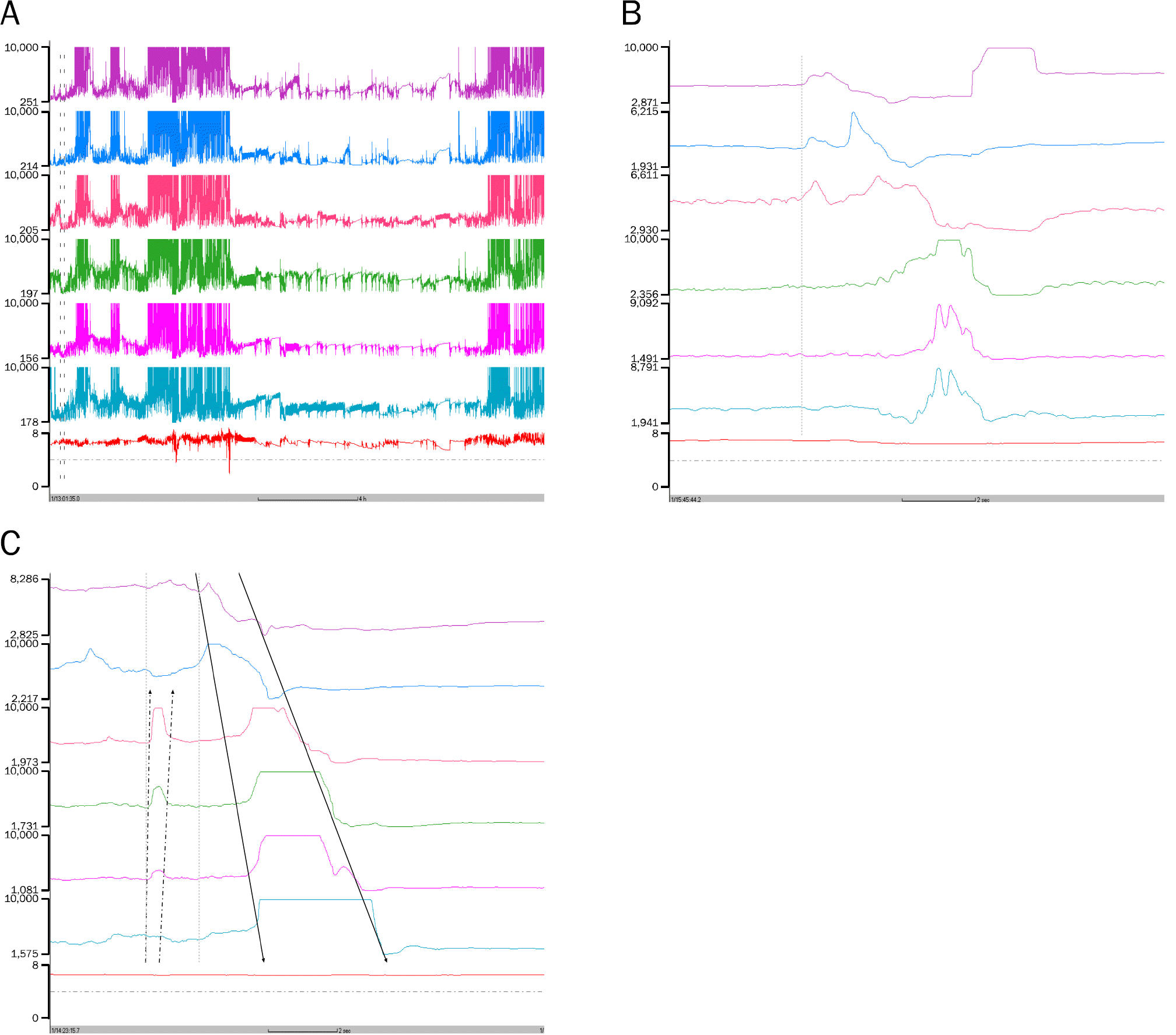Abstract
Aerophagia is a disorder caused by abnormal accumulation of air in the gastrointestinal tract as a result of repetitive and frequent inflow of air through the mouth. For the diagnosis of this condition, it is difficult to objectively measure the air swallowing. However, multichannel intraluminal impedance monitoring facilitates the differential diagnosis between normal air swallowing and pathologic aerophagia, and can aid in the determination of the frequency and amount of air swallowed. In this report, in addition to a literature review, we describe a case of 36-year-old man with abdominal distension who was diagnosed with aerophagia using esophageal impedance monitoring and was treated with clonazepam.
Go to : 
References
1. Hemmink GJ, Weusten BL, Bredenoord AJ, Timmer R, Smout AJ. Aerophagia: excessive air swallowing demonstrated by esophageal impedance monitoring. Clin Gastroenterol Hepatol. 2009; 7:1127–1129.

3. Tack J, Talley NJ, Camilleri M, et al. Functional gastroduodenal disorders. Gastroenterology. 2006; 130:1466–1479.

4. Lekkas CN, Lentino W. Symptom-producing interposition of the colon. Clinical syndrome in mentally deficient adults. JAMA. 1978; 240:747–750.

5. Bredenoord AJ. Management of belching, hiccups, and aerophagia. Clin Gastroenterol Hepatol. 2013; 11:6–12.

6. Chitkara DK, Bredenoord AJ, Rucker MJ, Talley NJ. Aerophagia in adults: a comparison with functional dyspepsia. Aliment Pharmacol Ther. 2005; 22:855–858.

7. Weil RS, Cavanna AE, Willoughby JM, Robertson MM. Air swallowing as a tic. J Psychosom Res. 2008; 65:497–500.

8. Hwang JB, Choi WJ, Kim JS, et al. Clinical features of pathologic childhood aerophagia: early recognition and essential diagnostic criteria. J Pediatr Gastroenterol Nutr. 2005; 41:612–616.

9. Komuro H, Matoba K, Kaneko M. Laparoscopic gastropexy for chronic gastric volvulus complicated by pathologic aerophagia in a boy. Pediatr Int. 2005; 47:701–703.

10. Basaran UN, Inan M, Aksu B, Ceylan T. Colon perforation due to pathologic aerophagia in an intellectually disabled child. J Paediatr Child Health. 2007; 43:710–712.

11. van der Kolk MB, Bender MH, Goris RJ. Acute abdomen in mentally retarded patients: role of aerophagia. Report of nine cases. Eur J Surg. 1999; 165:507–511.
12. Pouderoux P, Ergun GA, Lin S, Kahrilas PJ. Esophageal bolus transit imaged by ultrafast computerized tomography. Gastroenterology. 1996; 110:1422–1428.

13. Sifrim D, Silny J, Holloway RH, Janssens JJ. Patterns of gas and liquid reflux during transient lower oesophageal sphincter relaxation: a study using intraluminal electrical impedance. Gut. 1999; 44:47–54.

14. Imam H, Shay S, Ali A, Baker M. Bolus transit patterns in healthy subjects: a study using simultaneous impedance monitoring, videoesophagram, and esophageal manometry. Am J Physiol Gastrointest Liver Physiol. 2005; 288:G1000–G1006.

Go to : 
 | Fig. 1.Plain abdominal X-ray findings.(A) Excessive amounts of gas is observed in the stomach and intestine without any signs of obstruction. (B) After clonazepam treatment, gaseous distension of the small intestine and colon is improved. |
 | Fig. 2.Findings of multichannel intraluminal impedance monitoring. (A) Integral images were collected over twenty-three hours and analyzed for intraluminal impedance. The graph indicates multiple high peaks of impedance of more than 1,000 Ω above baseline measurements, especially during the daytime hours. (B) Swallowed air moves in the antegrade direction and aborally in the most distal impedance segment. (C) A gastric belch (dashed arrows), characterized by an increase in impedance that moves in the oral direction, is noted before an air swallow (solid arrows). |




 PDF
PDF ePub
ePub Citation
Citation Print
Print


 XML Download
XML Download